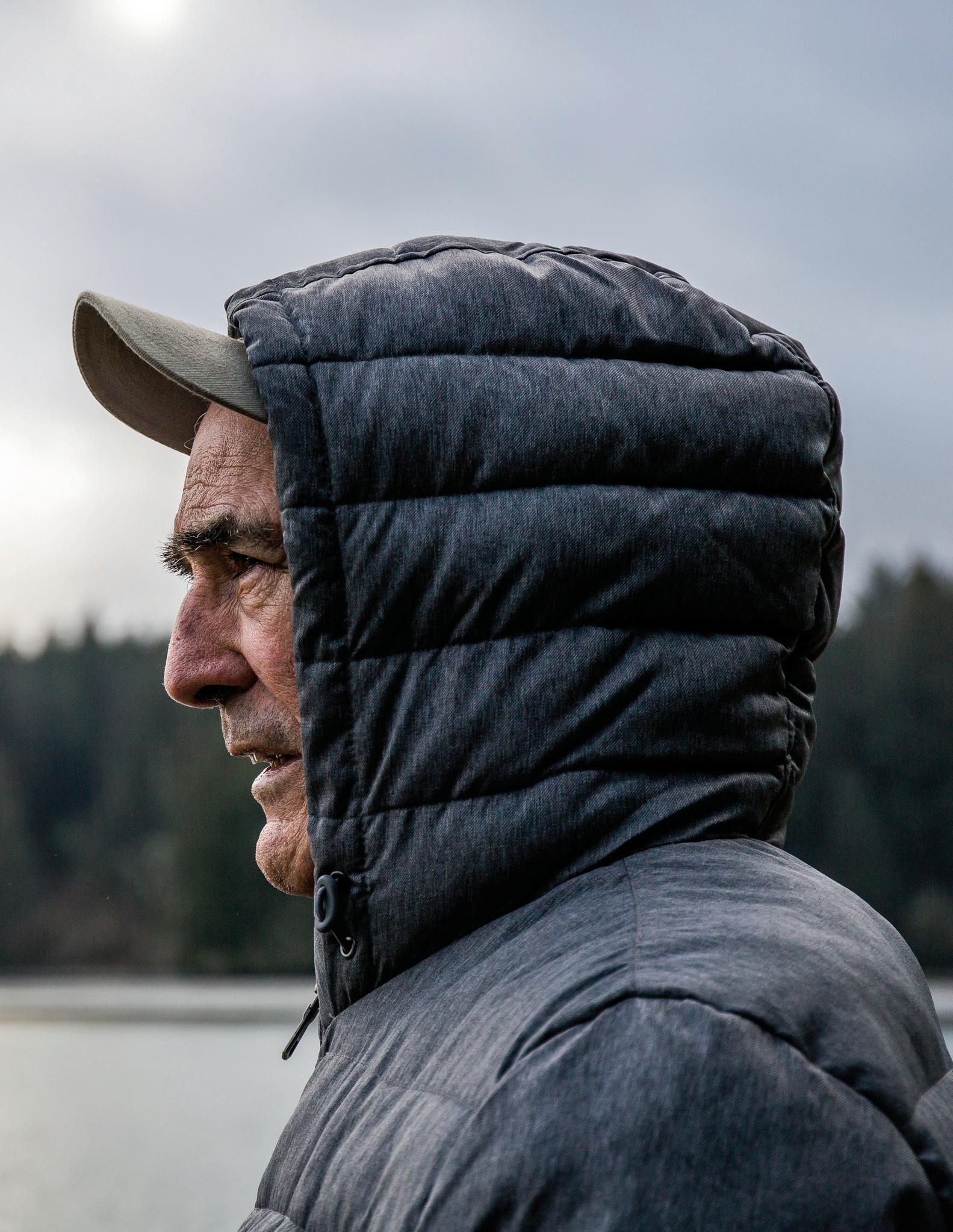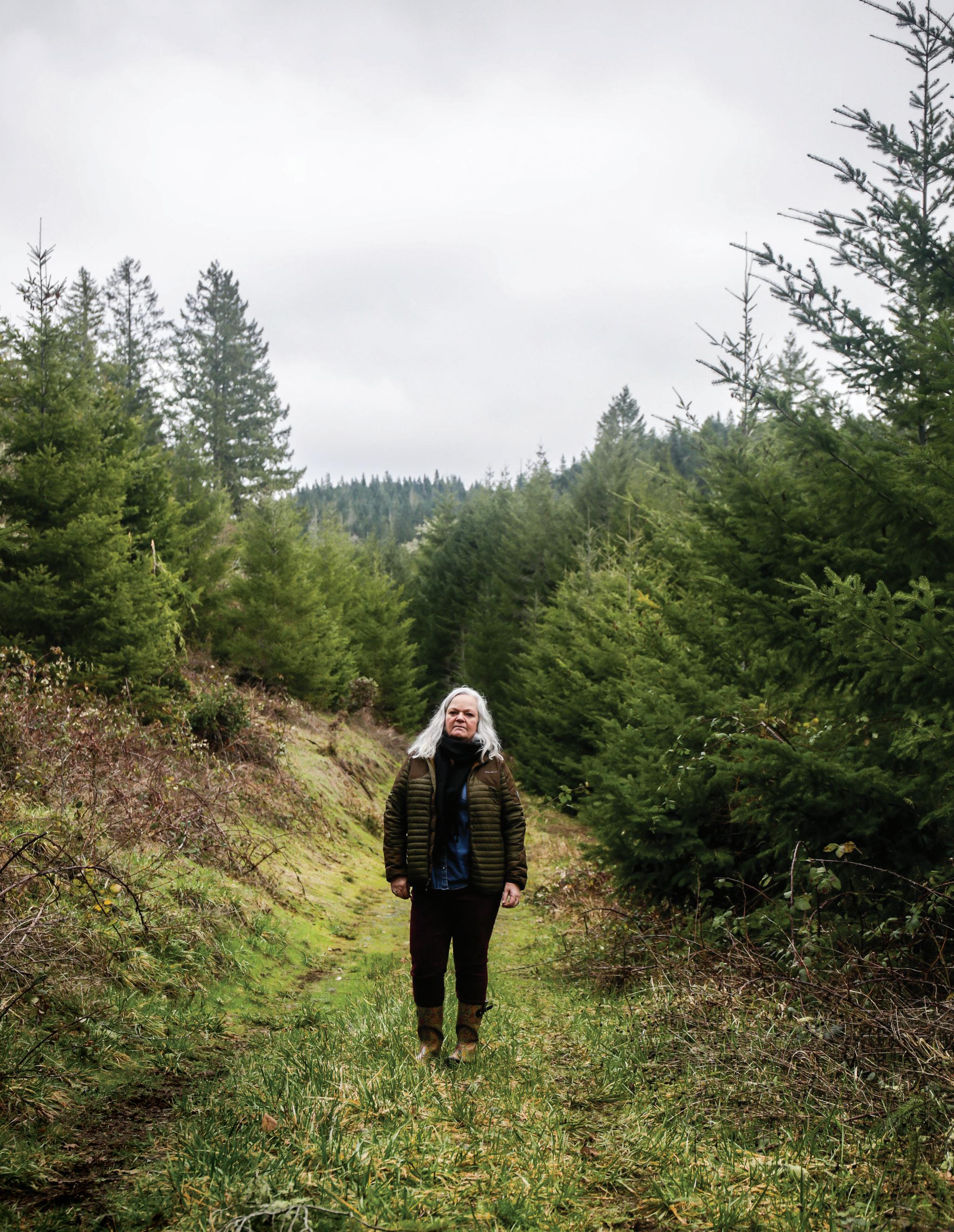
11 minute read
The Pipeline Problem
A fight against a controversial energy project is consuming the lives of Oregonians from the Cascades to the coast. As the final decision looms, will their efforts be enough?
Written by Shannon Daehnke & Kezia Setyawan, Photos by Kezia Setyawan
Advertisement
For more than a decade, many Oregonians have been waging an uphill battle against the Jordan Cove Energy Project. The proposed project seeks to construct a liquified natural gas terminal and a Pacific Connector Pipeline that would stretch across 229 miles of public and private land in Oregon.
The coalition against Jordan Cove is made up of everyone from tribal members to fishermen to environmental advocates, and residents of cities from Coos Bay to the Oregon/ California border. They insist that there will be significant adverse environmental impacts as a result of the pipeline. They’re also concerned about the potential impact on public lands and indigenous rights.
Pembina, a Canadian fossil fuel company and parent company of Jordan Cove LNG, acquired the project in late 2017. Pembina is now trying to acquire all the extensive approvals needed to build the Pacific Connector Pipeline that would carry fracked gas from Malin, Oregon, to a new facility in Coos Bay. Much of the fracked gas would come from a facility in Alberta, Canada, and then, when ready, would be sent to markets in Asia.
Despite Oregon officials’ reluctance to approve the LNG facility, in March, the Federal Energy Regulatory Commission (FERC) voted 2-1 to approve the energy project.
The federal approval is a significant milestone for the project and for Pembina. Though nothing is final yet, President Donald Trump’s series of pro-oil moves lead many to think the launch of the pipeline is, in fact, extremely likely.
A diverse coalition of Oregonians, however, have devoted over 15 years of their lives to the fight against this project, and they’re not giving up yet.

Karin Richardson views: The Haynes Inlet Portal installation. Richardson has built relationships with many different community members and has played a large part in organizing efforts against the proposed pipeline project.
THROUGH AN ARTIST'S EYES
Coos Bay locals are able to spot the eccentric Karin Richardson from a mile away, sporting her signature red beret.
The coastal city of Coos Bay has been home to Richardson and her family for four generations. She often spent her summers crabbing and clamming along the coast with her family, establishing her passion for nature and for her hometown at a very young age.
Today, she refers to herself as an “artivist.” She is wellknown for her environmental art, made from things she finds in nature—everything from sea glass and kelp to driftwood and scrap metal. One of her pieces, a chandelier made of kelp, hangs in downtown Coos Bay at a local pizzeria where she and her grandpa Curly used to watch ships in the bay together when she was a child.
When Richardson learned of the Jordan Cove project and its potential to dramatically disrupt her hometown, she prepared to fight back. Her involvement over the last decade has “switched from being involved in the fight to being consumed by it,” she says.
“They’re taking away our land, our roots. The project would be the end of Coos Bay as we know it,” she says.
Richardson says the construction of the pipeline and terminal would damage everything she loves about her home. In addition to factors such as noise, air and water pollution, and the decline of local marine life populations, Richardson says too many things about the project remain uncertain.
“So much of the project is a concept. The company really doesn’t know how the 400-plus waterways will be affected and if it could ever recover. It’s so unknown the damage that will happen. All the money in the world doesn’t justify that.”


Younker takes a moment: to look at Mary Susan, the fishing boat his father built.
DEFENDING HERITAGE
Much of the land that the Jordan Cove LNG Pipeline is set to cut through has been occupied and cherished by various indigenous communities for generations. Tribes as far south as California say the construction would harm the populations of Chinook steelhead and salmon, significantly threatening a mainstay in their economies.
The project has renewed concerns over the use of eminent domain and construction impacts on ancestral tribal territory, fragile salmon habitat and forestland. Pacific Northwest tribes have been vocal and actively involved, setting the stage for future battles if the pipeline is ultimately approved.
“If the pipeline gets put here, our entire way of life will be interrupted,” says Tom Younker, a registered member and former council member of the Coquille Indian Tribe.
Younker, a native of Charleston, Oregon, a town less than 10 miles from Coos Bay, says that at first the pipeline seemed safe enough for him to back it. It appeared in its original plan—15 years ago—to simply provide the energy the town needed. It also might revitalize the local economy.
Younker changed his mind, however, when he learned that Pembina would be taking the profits and the natural gas would be sent to markets in Asia.
Despite the current stance of many of the members, the Coquille Tribe initially supported the 2009 application for the pipeline but later declared the Tribe’s official stance as “neutral.” They went on to serve as a “cooperating agency” to the federal authorities working on the project.
“The tribe should have a stand. They aren’t very consistent with being vocal on anything,” Younker says. “We’ve lived here long enough to have our opinion heard.”
Younker’s focus on the environment plays an important role as he has kinship ties that span across generations.
“My family grew up here,” he says. “My brother got his Indian name here. I hope to be buried here; I don’t want to leave this area. I’m really happy with my life here.”
A PIECE MADE IN PROTEST
Retired biologist Larry Mangan and his wife Sylvia live on a scenic property at the north edge of Haynes Inlet. The Inlet is an alternative intersection to the proposed pipeline and LNG terminal routes.
“This place is a dream come true—our heaven on earth,” Mangan says. “When we purchased the property, we envisioned that we could restore parts of it to how it was.”
Mangan’s work in restoring his property has been manifested in collaboration with the Confederated Tribes of Coos and Lower Umpqua and Siuslaw Indians.
Mangan’s land, a salt marsh, is also home to a recent installation of protest art called the Haynes Inlet Portal. Created by Erin Moore, an associate professor and director of the School of Architecture and Environment at the University of Oregon, the portal is one of three installations done along the surveyed pipeline route.
The portal serves as an example of just how imposing the project would be and actually mimics the size of a section of the pipeline—only it’s made of biodegradable materials. Moore and a group of her graduate students who helped build the portal often visit the site on the Mangans’ land to see how it’s changed over time.
“I wanted to make something rather than just writing or presenting,” says Moore, “and advance dialogue about environmental issues in tangible spaces.”
In the evening, leftover driftwood from the high tide and animal tracks reveal how the portal isn’t just an art piece; rather it’s become part of the local ecosystem. “These [installations] give insight to those places, and provide a lens for biodiversity and environmental change,” says Moore.
The prospect of having what Larry Mangan calls a “potentially explosive” pipeline built within 500 feet of their home is 180 degrees from everything he believes in. He says that having the pipeline built would be an absolute nightmare, likening the prospect to “living with a disease on your property.”
“We literally wouldn’t be able to sleep at night. We’d have to move,” says Mangan.

Inspired by author: Aldo Leopold’s book “The Sand County Almanac,” Larry Mangan constructed an outlook where visitors can see the changing landscape.

Pam Ordway stands on a path that leads to her family’s property. The proposed pipeline has caused a lot of stress for landowners like Ordway in Douglas county.
BATTLE ON THE HOMEFRONT
Pam Ordway’s family estate is located on the path of the projected pipeline in Camas Valley, Oregon about an hour southeast of Coos Bay. The property has been home to her family since 1917 when her great uncle purchased it. Pam is one of six children raised on the farm; her brother and his wife and children still live there today.
“My father always said that it’s impossible to build more land,” says Ordway. “It’s our land, it’s where we grew up. When we come back here it feels like we never left.”
Ordway, 63, has long spearheaded the movement against the Jordan Cove Project, testifying in numerous county meetings, writing letters to the FERC and filing multiple appeals with the Land Use Board of Appeals.
The experience over the past decade for Ordway has felt, she says, like a class with tons of papers and projects. Only, this is a class nobody ever wanted to take.
“We didn’t sign up for the class, we didn’t want credit for the class, and we would like to be doing something else with our time,” she says.
Ordway says that the fight has been so ongoing due to a lack of public awareness about the issue at hand. The citizens most affected by the project, such as farmers and ranchers, are the ones who typically live more reserved and remote lifestyles. Ordway argues that a lack of internet access paired with the generally older age of the residents who own the proposed properties have made it difficult for them to acquire the knowledge and the legal sources that they need to successfully fight back.
The FERC’s approval in March allows officials the ability to begin the condemnation process which, to Ordway, feels like “a kick in the gut.”
Residents have two choices: to sell an easement of their land or get an attorney to resist their land being used for the project. But, Ordway says, most of the residents, at least in her county who have land on the property line, can’t afford legal representation.
“FERC’s approval forces us to begin negotiations to sell an easement that we don’t want to do,” she says.
In response, Ordway and fellow landowners in Douglas County launched a nonprofit called Greater Good Oregon and began raising money to help individuals pay for legal representation.
“We want them to know that if they don’t have money to pay for an attorney, they can still fight,” she says.
A UNIFIED EFFORT
The silver lining of this “living hell” of a battle, Ordway says, has been witnessing people from different backgrounds come together toward a unified goal.
“Seeing people from environmental groups, landowners, different tribes—who really don’t have much in common besides this—come together has been really heartwarming,” says Ordway.
The recent affirmative decision from the FERC is a significant step forward for the Jordan Cove project.
In a public statement, Harry Anderson, Pembina’s senior vice president and chief legal officer, says, “We appreciate FERC’s science-based approach to their review.
The approval emphasizes yet again that Jordan Cove is environmentally responsible and is a project that should be permitted given a prudent regulatory and legal process was undertaken.”
Citizens like Ordway, Richardson, Mangan, and Younker, however, argue that the real support and unity within the community lies with those who are actively fighting against the project.
“When we’re all at rallies and we introduce ourselves to each other, the unity of people is really remarkable,” Richardson says. “I would never have met or realized so many different groups of people were so deeply impacted. For the rallies people come from all over—Portland, Corvallis, Salem, Medford, Ashland and a bunch of outlying areas—and the people are just the most wonderful salt of the earth. And they would probably not have come together had it not been something so dear and important to them.”
To see so many people from different groups working together and not allowing their disagreements to get in the way of their shared goal, Ordway says, has been “really rewarding.”
“This is more than just about some property. This is about the health of Southern Oregon.”










